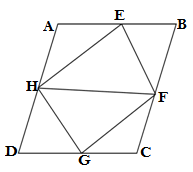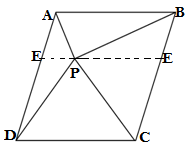NCERT Solutions Class 9 Maths Exercise 9.1 and 9.2 -Areas of Parallelogram and Triangles
NCERT Solutions Class 9 Maths Exercise 9.1 and 9.2 of Chapter 9-Areas of Parallelogram and Triangle is very important to study for the exam preparations. These NCERT solutions are the solutions of unsolved questions of class 9 NCERT maths textbook exercise 9.1 and 9.2 of chapter 9 .All questions are solved by the expert by a step by step method.
Here you can study science and maths from class 9 to 12, our articles on competitive entrance exams, carrier in online jobs. You can also download e-books of maths, science, physics, chemistry, biology, and e-books on the carrier.
Click for online shopping
Future Study Point.Deal: Cloths, Laptops, Computers, Mobiles, Shoes etc
NCERT Solutions class 9 maths of chapter 9-Areas of parallelogram and triangles
Exercise 9.3-Areas of Parallelogram and Triangles
Download pdf of NCERT solutions of class 9 maths chapter 9-Areas of Parallelogram and Triangle
PDF-NCERT solutions of class 9 maths chapter 9-Areas of Parallelogram
NCERT Solutions of Class 9 Science : Chapter 1 to Chapter 15
Q1. Which of the following figure lie on the same base and between the same parallels. In such a case, write the common base and the two parallels.
Ans.
(i) In figure (i) parallelogram ABCD and ΔPCD are between the same parallels,the common base is DC and the two parallel lines are AB ∥ DC.
(ii)In figure (ii) parallelogram PQRS and quadrilateral MNRS are not between the same parallels, although the common base is SR
(iii) In figure (iii) quadrilateral PQRS and ΔQTR are between the same parallels,the common base is QR and the two parallel lines are PS ∥ QR.
(iv) In figure (iv) parallelogram ABCD and ΔPBQ are not between the same parallels AD∥BC, but there is no common base.
(v) In figure (v) quadrilateral ABQD and quadrilateral APCD are between the same parallels AD∥ BQ and the common base is AD.
(vi) In figure (vi) quadrilateral PQRS and quadrilateral ABCD are between the same parallels PQ∥ SR but they don’t have a common base.
Exercise 9.2
Q1. In the given figure ABCD is a parallelogram ,AE ⊥ DC and CF ⊥ AD.If AB = 16 cm,AE = 8 cm and CF = 10 cm,find AD.
Ans. Area of parallelogram = 1/2 (Base × altitude)
AB = DC= 16 cm (opposite sides of parallelogram)
Area of parallelogram ABCD = 1/2(DC × AE) =1/2(16×8) =64 cm²
Area of parallelogram ABCD = 1/2(AD × CF) =1/2(AD×10)
1/2(AD×10) = 64
10 AD = 128
AD = 12.8 cm
Q2.If E, F,G and H are respectively are the mid points of the sides of a parallelogram ABCD ,show that
Ans.
GIVEN: ABCD is a parallelogram
E, F, G, and H are midpoints of AB, BC, CD, and AD respectively
CONSTRUCTION: Joining the points H and F
TO PROVE:
PROOF: H and F are the mid points of AD and BC respectively
∴HF ∥ DC and HF =DC
HFCD will be a parallelogram
Since the area of a triangle is half of the area of a parallelogram between the same parallels and on the common base.
H and F are the midpoints of AD and BC respectively
∴HF ∥ AB and HF =AB
ABFH will be a parallelogram
Adding both equations (i) and (ii)
Hence proved
Q3. P and Q are any two points lying on the sides DC and AD respectively of a parallelogram ABCD.Show that ar(APB) = ar(BQC).
Ans.
GIVEN: ABCD is a parallelogram
P and Q are the points on the sides DC and AD respectively
TO PROVE: ar(APB) = ar(BQC).
PROOF: The area of a triangle is half of the area of a parallelogram between the same parallels and on the common base
Here parallelogram ABCD and ΔAPB are on the same base AB and between the same parallels AB ∥ DC.
Parallelogram ABCD and ΔBCQ are on the same base AB and between the same parallels AD ∥ BC
From equation (i) and equation (ii)
ar(APB) = ar(BQC), Hence proved
Q4. In the given figure,P is a point in the interior of a parallelogram ABCD. Show that
(i) ar(APB) + ar(PCD) = 1/2 ar(ABCD)
(ii) ar(APD) + ar(PBC)= ar(APB) + ar(PCD)
(Hint: Through P draw a line parallel to AB)
Ans.
GIVEN:P is a point in the interior of a parallelogram ABCD
CONSTRUCTION: Drawing a line FE through P such that FE∥AB∥ DC.
TO PROVE:
(i) ar(APB) + ar(PCD) = 1/2 ar(ABCD)
(ii) ar(APD) + ar(PBC)= ar(APB) + ar(PCD)
PROOF:
(i) AB ∥ FE (constructed)
AF∥BE (since AD ∥ BC)
ABEF will be a parallelogram
ΔAPB and ABEF are the triangle and parallelogram on the same base AB and between the same parallels AB ∥ FE.
ΔPCD and FECD are the triangle and parallelogram on the same base DC and between the same parallels DC ∥ FE
Adding both equation (i) and (ii)
(ii)
Drawing a line EF such that EF∥AD∥BC
AFED and ΔAPD are the parallelogram and triangle on the same base AD and between the same parallels AD ∥ FE
FBCE and ΔPBC are the parallelogram and triangle on the same base BC and between the same parallels BC ∥ FE
Adding both equation (i) and (ii)
Since, we already have proved in (i)
Therefore
ar(APD) + ar(PBC)= ar(APB) + ar(PCD),Hence proved
Q5.In the given figure ,PQRS and ABRS are parallelograms and X is any point on side BR .Show that
(i) ar(PQRS) = ar(ABRS)
(ii) ar(AXS) = 1/2 ar( PQRS)
Ans.(i) Parallelograms PQRS and ABRS are on the same base SR and between the same parallels PB ∥ SR
∴ ar(PQRS) = ar(ABRS)
(ii) Tringle AXS and Parallelogram ABRS are on the same base AS and between the same parallels AS∥ BR.
ar(AXS) = 1/2 ar(ABRS)…..(i)
ar(PQRS) = ar(ABRS)[proved above]…….(ii)
From equation (i) and (ii)
ar(AXS) = 1/2 ar(PQRS), Hence proved
Q6.A farmer was having a field in the form of a parallelogram PQRS. She took any point A on RS and joined it to points P and Q. In how many parts the field is divided? What are the shapes of these parts? The farmer wants to sow wheat and pulses in equal portions of the field separately. How should she do it?
Ans.
Ans. PQRS is a field in the form of a parallelogram
A is a point on RS that is joined to P and Q
The field is divided into three triangular parts ΔPAS, ΔPQA and ΔQAR
ar(ΔPAS) +ar(ΔPQA) + ar(ΔQAR) = ar(PQRS)
PQRS and ΔPQA are the parallelogram and triangle on the same base PQ and between the same parallels PQ ∥ SR
ar(ΔPQA) = 1/2 ar(PQRS)….(i)
ar(ΔPAS) + ar(ΔQAR)= 1/2 ar(PQRS)
ar(ΔPAS )+ ar(ΔQAR)+ 1/2 ar(PQRS)= ar(PQRS)
ar(ΔPAS) + ar(ΔQAR) = ar(PQRS) – 1/2 ar(PQRS)
ar(ΔPAS) + ar(ΔQAR) = 1/2 ar(PQRS)….(ii)
From equation (i) and (ii)
ar(ΔPAS) + ar(ΔQAR) = ar(ΔPQA)
The relationship between the triangular parts ΔPAS ,ΔPQA and ΔQAR shows that the farmer will sow wheat in ΔPQA and pulses in ΔQAR and ΔPAS or its vise versa.
NCERT Solutions of Science and Maths for Class 9,10,11 and 12
NCERT Solutions for class 9 maths
NCERT Solutions for class 9 science
NCERT Solutions for class 10 maths
CBSE Class 10-Question paper of maths 2021 with solutions
CBSE Class 10-Half yearly question paper of maths 2020 with solutions
CBSE Class 10 -Question paper of maths 2020 with solutions
CBSE Class 10-Question paper of maths 2019 with solutions
NCERT Solutions for Class 10 Science
NCERT Solutions for class 11 maths
| Chapter 1-Sets | Chapter 9-Sequences and Series |
| Chapter 2- Relations and functions | Chapter 10- Straight Lines |
| Chapter 3- Trigonometry | Chapter 11-Conic Sections |
| Chapter 4-Principle of mathematical induction | Chapter 12-Introduction to three Dimensional Geometry |
| Chapter 5-Complex numbers | Chapter 13- Limits and Derivatives |
| Chapter 6- Linear Inequalities | Chapter 14-Mathematical Reasoning |
| Chapter 7- Permutations and Combinations | Chapter 15- Statistics |
| Chapter 8- Binomial Theorem | Chapter 16- Probability |
CBSE Class 11-Question paper of maths 2015
CBSE Class 11 – Second unit test of maths 2021 with solutions
NCERT solutions for class 12 maths
| Chapter 1-Relations and Functions | Chapter 9-Differential Equations |
| Chapter 2-Inverse Trigonometric Functions | Chapter 10-Vector Algebra |
| Chapter 3-Matrices | Chapter 11 – Three Dimensional Geometry |
| Chapter 4-Determinants | Chapter 12-Linear Programming |
| Chapter 5- Continuity and Differentiability | Chapter 13-Probability |
| Chapter 6- Application of Derivation | CBSE Class 12- Question paper of maths 2021 with solutions |
| Chapter 7- Integrals | |
| Chapter 8-Application of Integrals |
Class 12 Solutions of Maths Latest Sample Paper Published by CBSE for 2021-22 Term 2
Class 12 Maths Important Questions-Application of Integrals
Solutions of Class 12 Maths Question Paper of Preboard -2 Exam Term-2 CBSE Board 2021-22
Solutions of class 12 maths question paper 2021 preboard exam CBSE Solution











